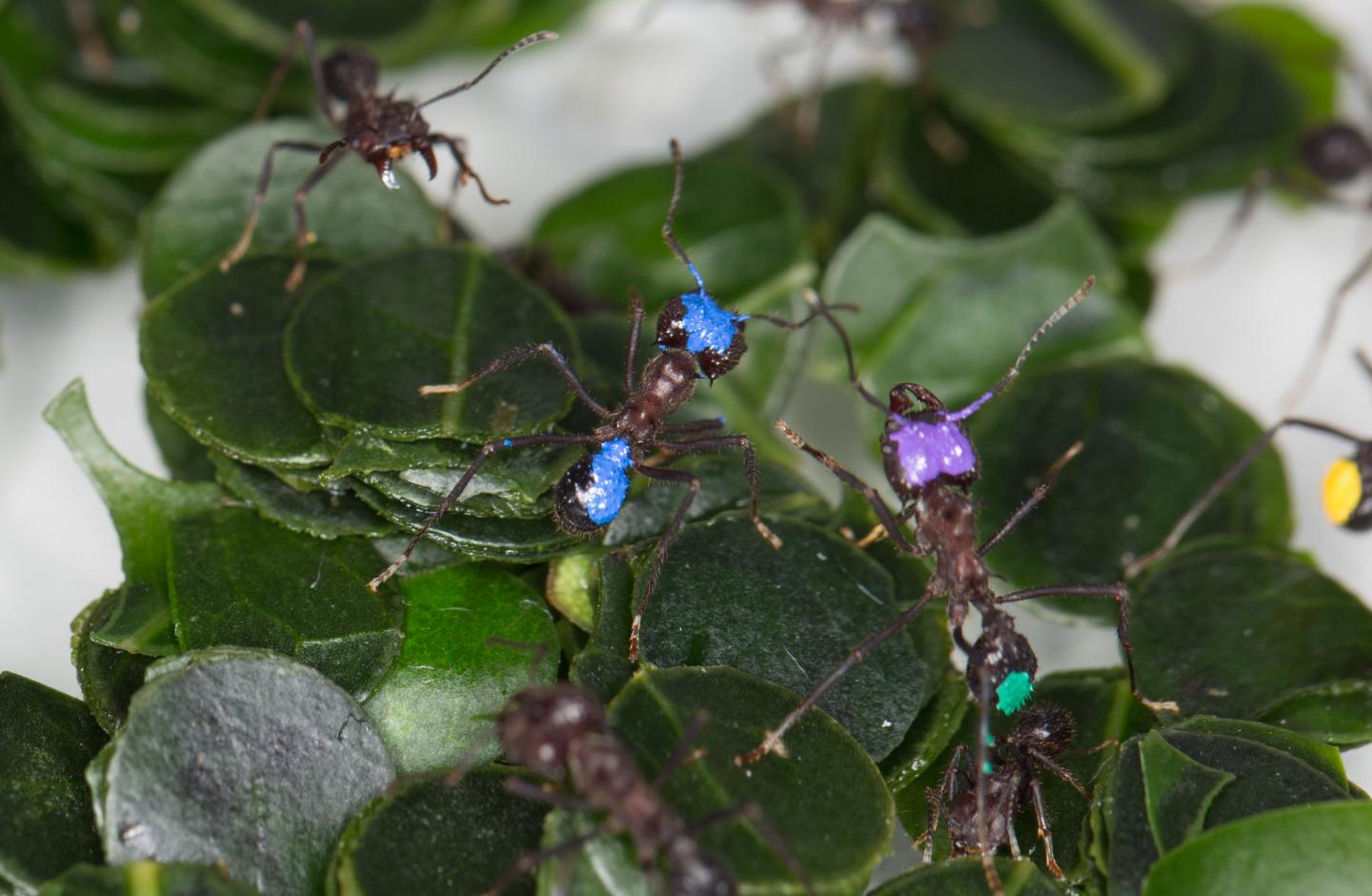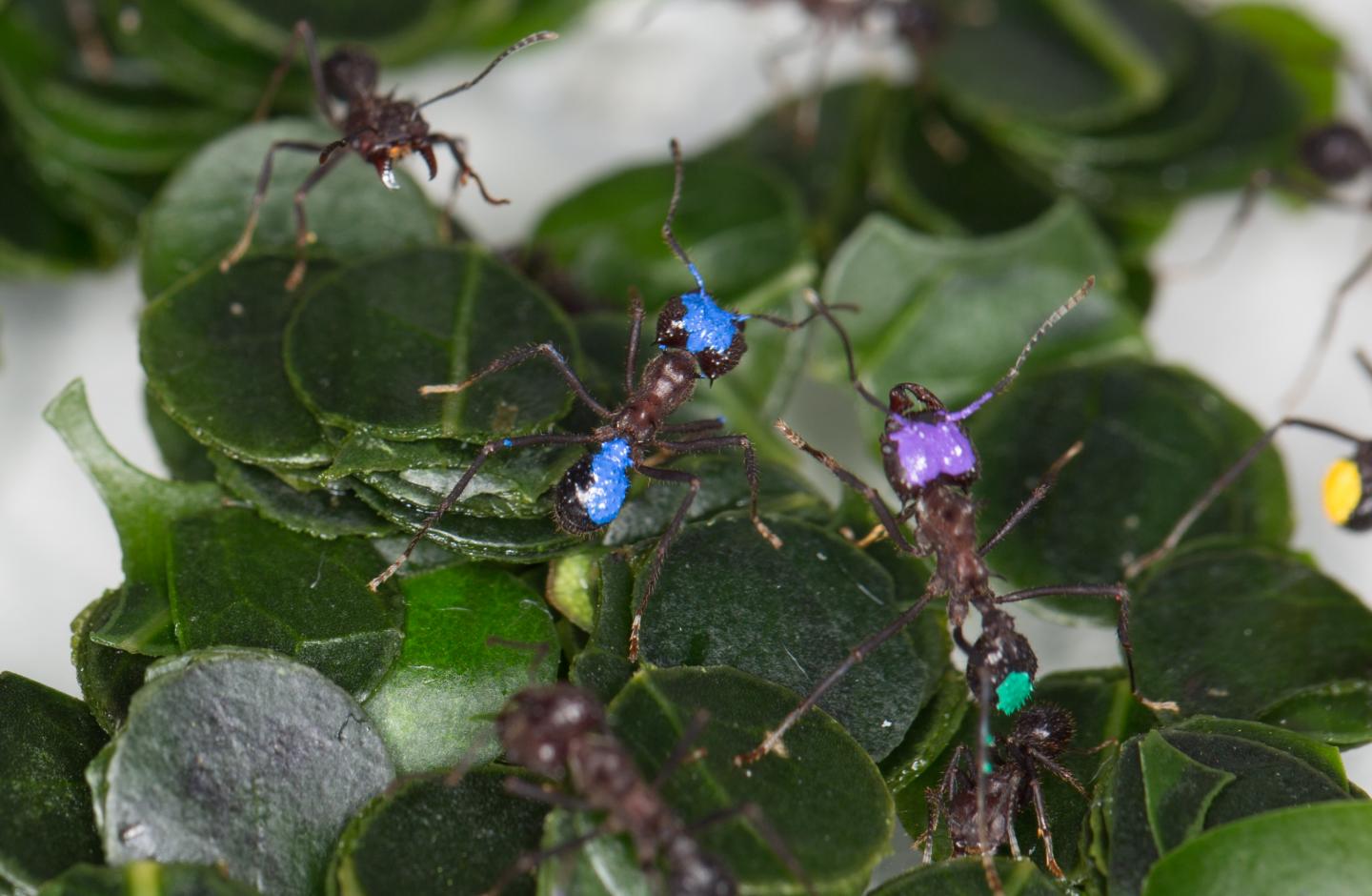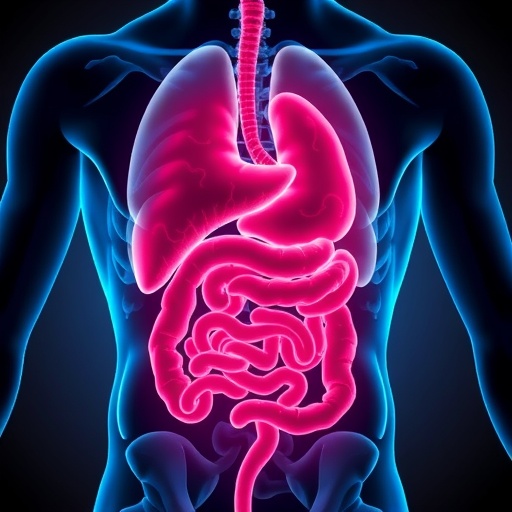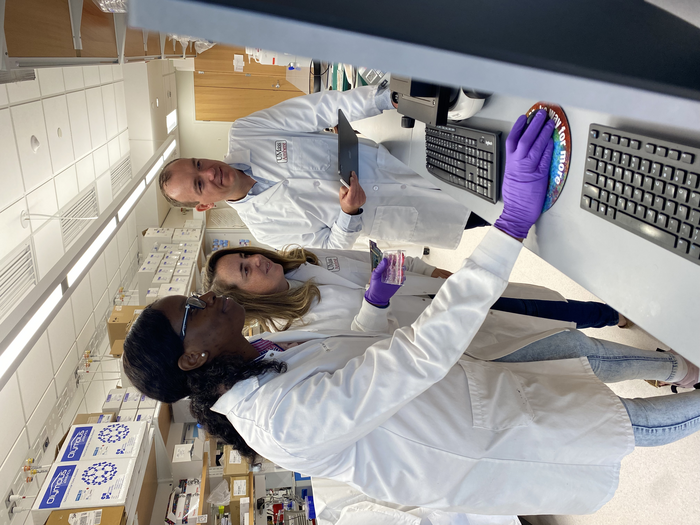
Credit: Erik Frank
Leaf-cutting ants can learn which plants are not suitable for the fungus gardens that supply their food before they even leave the colony, according to a study published March 8, 2017 in the open-access journal PLOS ONE by Andrés Arenas and Flavio Roces from University of Wurzburg, Germany.
Leaf-cutting ants harvest leaf fragments and carry them back to their nests, using them to grow a symbiotic fungus that is their main source of food. If a plant proves unsuitable for the fungus garden, however, ants stop collecting it. Arenas and Roces had previously shown that foragers learned to avoid plants not suited to fungus gardens even if they had not been directly exposed to the plants or their effects on the fungus. To find out how the ants learned to identify unsuitable plants, the researchers exposed naïve foragers to waste from fungus gardens that contained fungicide-treated privet leaves. Specifically, they established two colonies of 1,000 worker ants in the lab, and fed fungicide-treated privet leaves to one colony and untreated leaves to the second. Then they exposed the naïve ants in the second colony to waste from the first one.
The researchers found that waste from fungicide-treated privet leaves made naïve ants avoid foraging on privets. This shows that cues within the colony's waste dump are enough for ants to learn which plants are not suited to their fungus gardens. Additionally, 35% of the ants that had foraged the previous day visited the waste dump, which is more than previously thought and has implications for social learning in leaf-cutting ants.
"Besides the undesirable effect of waste, waste particles carry information that foraging ants use outside the nest when selecting plants for their symbiotic fungus," says Arenas.
###
In your coverage please use this URL to provide access to the freely available article in PLOS ONE: http://dx.doi.org/10.1371/journal.pone.0171388
Citation: Arenas A, Roces F (2017) Avoidance of plants unsuitable for the symbiotic fungus in leaf-cutting ants: Learning can take place entirely at the colony dump. PLoS ONE 12(3): e0171388. doi:10.1371/journal.pone.0171388
Funding: This work was supported by University of Würzburg in the funding program Open Access Publishing German Research Foundation (DFG), SFB 1047 TP C1German Academic Exchange Service (Deutscher Akademischer Austauschdienst, DAAD) (ref. no.: A/11/81698).
Competing Interests: The authors have declared that no competing interests exist.
Media Contact
Beth Jones
[email protected]
############
Story Source: Materials provided by Scienmag






